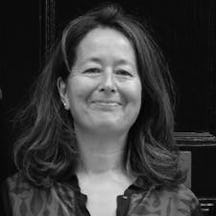Situated in this case is a book which is believed to be a 17th-century copy of the Chinese encyclopedia ’San-ts’ai t’u-hui’. It is open at an illustration of the heart, surrounded by Chinese script. This illustration would have been likely used to help visualise areas of the body that needed spiritual or medical attention.
It shows a thick tube extending straight up from the top of the heart, while four smaller tubes stem from the central one, like downward-facing branches. These connect the heart to the spleen, kidneys and liver.
In classical Chinese medicine – found in ‘The Yellow Emperor’s Inner Canon’ – the function of the organs was described as collaborating administrators of government and the heart was the ‘ruler’. The organs were also the seat of emotions. ‘The Yellow Emperor’s Inner Canon’ states that if the heart qi is depleted, then the patient will be grieved. If replete, then he will laugh without end.
The first time we see this cultivation of the spirit focusing on the heart is in the ‘Guanzi’, a third- to fourth-century BCE miscellany of writings, most of them about statecraft, attributed to the minister Guan Zhong, who died 645 BCE. It is, some claim, China’s first text about mystical meditation.
All of the organs are related to different spirits and emotions, but the heart is the home for the shen spirit and it is where joy is situated. It is also the key to our consciousness and “presence of mind”, and a state of distraction can be associated with a weak spirit in the heart.
Happiness always, therefore, grows from the heart. It can be a jumpy kind of joy, like when you’re in love, or a peaceful type of happiness, like when I breathe deeply and practice Taijiquan – which I do most days still – and the breathing stops my mind racing.
When I have practised for half an hour or so, I experience the physical space of my heart as a quietness at my centre. The spirit can be at home in the emptiness. Even today, the Chinese say that they xinli xiang, that is they think in their hearts, because it is the reflective centre of their being.
When the heart is fixed; sight is clear, hearing is distinct and the four limbs are hard and firm, becoming an abode for the ‘quintessential’. The ‘quintessential’ is the quintessence of the qi and when the qi arrives, it vitalises.
